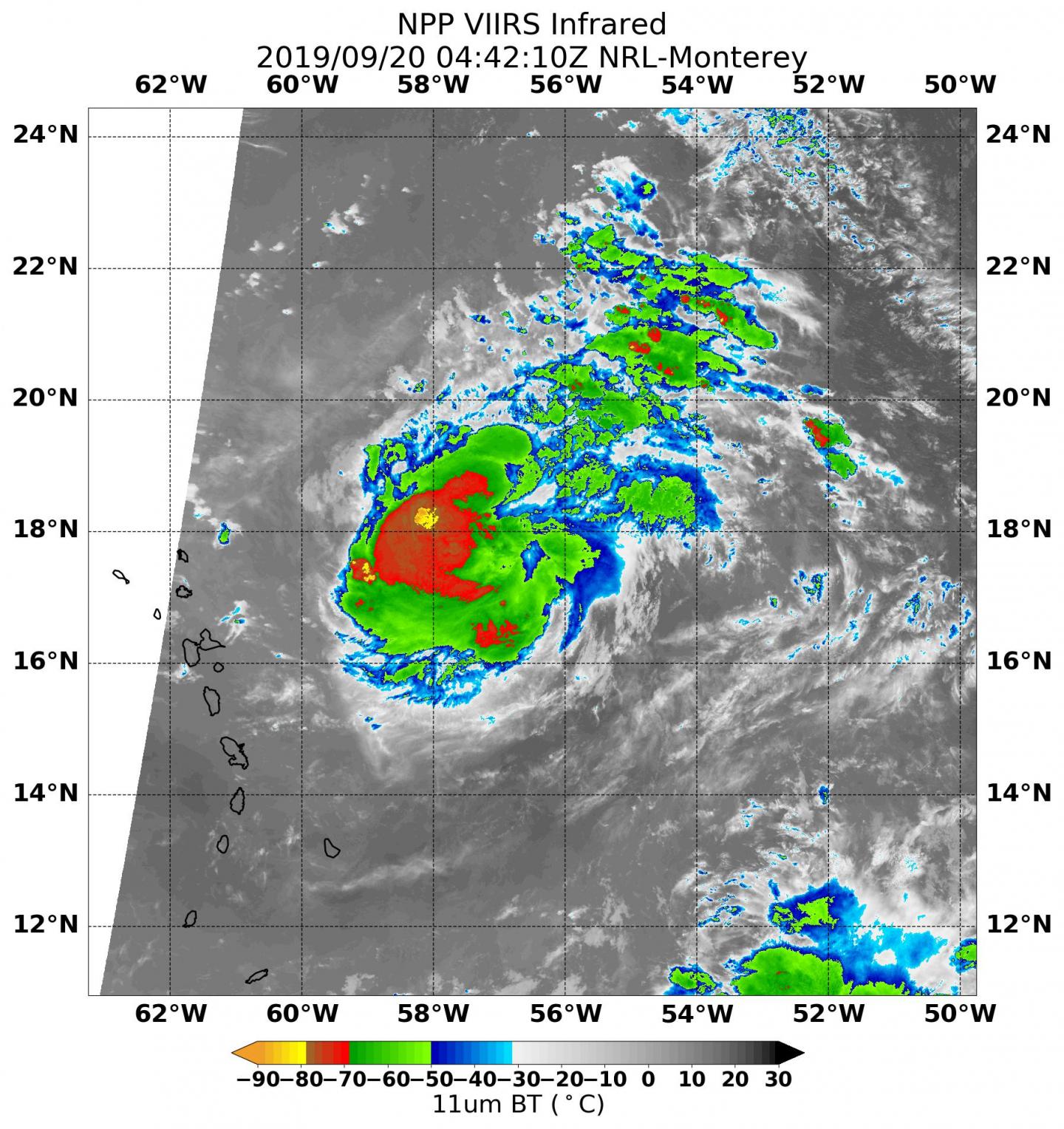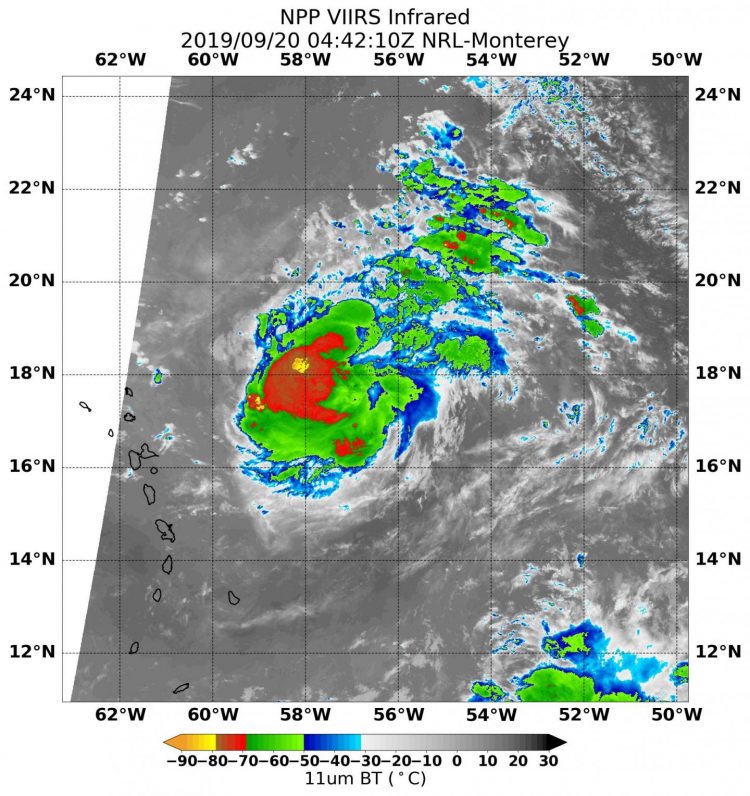
Credit: Credit: NASA/NOAA/NRL
NASA-NOAA’s Suomi NPP satellite passed over the North Atlantic Ocean and used infrared light to obtain temperature information about Hurricane Jerry’s cold cloud tops.
Tropical Storm Jerry strengthened into a hurricane on Sept. 19 by 11 a.m. EDT.
NASA-NOAA’s Suomi NPP satellite used infrared light to analyze the strength of storms within the structure of Hurricane Jerry. Infrared data provides temperature information, and the strongest thunderstorms that reach high into the atmosphere have the coldest cloud top temperatures. This data is helpful to forecasters because storms are not uniform around tropical cyclones and it helps pinpoint where the strongest storms are located.
On Sept. 20 at 12:42 a.m. EDT (0442 UTC), the Visible Infrared Imaging Radiometer Suite (VIIRS) instrument aboard Suomi NPP found that the strongest thunderstorms circling Jerry’s center had cloud top temperatures as cold as minus 70 degrees Fahrenheit (minus 56.6 Celsius). NASA research has shown that cloud top temperatures that cold indicate strong storms have the potential to generate heavy rainfall.
NOAA’s National Hurricane Center (NHC) said that those heavy rains are possible over the Northern Leeward Islands. Jerry is expected to produce 1 to 3 inches of rainfall, with isolated maximum totals of 4 to 6 inches from Barbuda northwest across St. Maarten, Anguilla, and Anegada. This rainfall may produce life-threatening flash floods. Jerry is forecast to produce total rainfall accumulations of 1 to 2 inches with maximum amounts of 3 inches across the Virgin Islands and Puerto Rico.
On Sept. 22, a Tropical Storm Watch was in effect for St. Maarten, St. Martin, St. Barthelemy, Saba and St. Eustatius.
At 8 a.m. EDT (1200 UTC), the center of Hurricane Jerry was located near latitude 18.5 degrees North and longitude 59.6 degrees West. That puts Jerry’s center about 155 miles (245 km) east-northeast of Barbuda. Jerry was moving toward the west-northwest near 16 mph (26 kph). Maximum sustained winds have decreased to near 100 mph (155 kph) with higher gusts. A gradual weakening trend is forecast to continue today, but Jerry is expected to remain a hurricane during the next few days. An Air Force Reserve Hurricane Hunter aircraft has recently reported a minimum central pressure of 989 millibars.
On the forecast track, NHC forecasters expect the center of Jerry will move north of the northern Leeward Islands later today, pass well north of Puerto Rico on Saturday, and be well east-northeast of the southeastern Bahamas on Sunday, Sept. 22, 2019.
Interests elsewhere in the northern Leeward Islands should monitor the progress of Jerry.
Hurricanes are the most powerful weather event on Earth. NASA’s expertise in space and scientific exploration contributes to essential services provided to the American people by other federal agencies, such as hurricane weather forecasting.
###
Media Contact
Rob Gutro
[email protected]
Original Source
https:/





